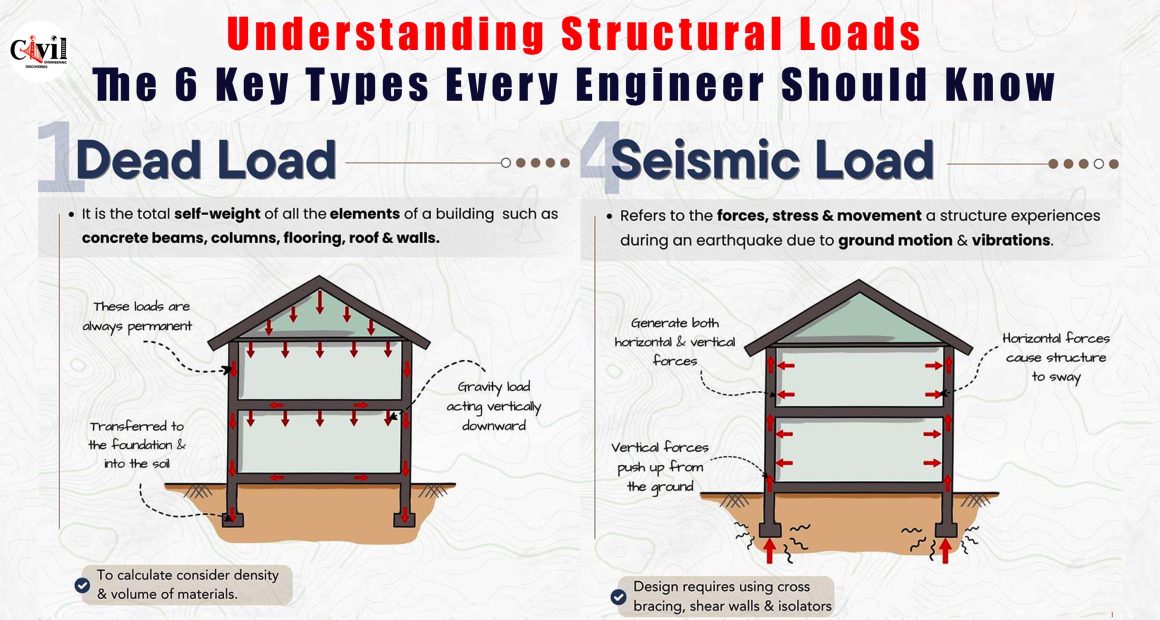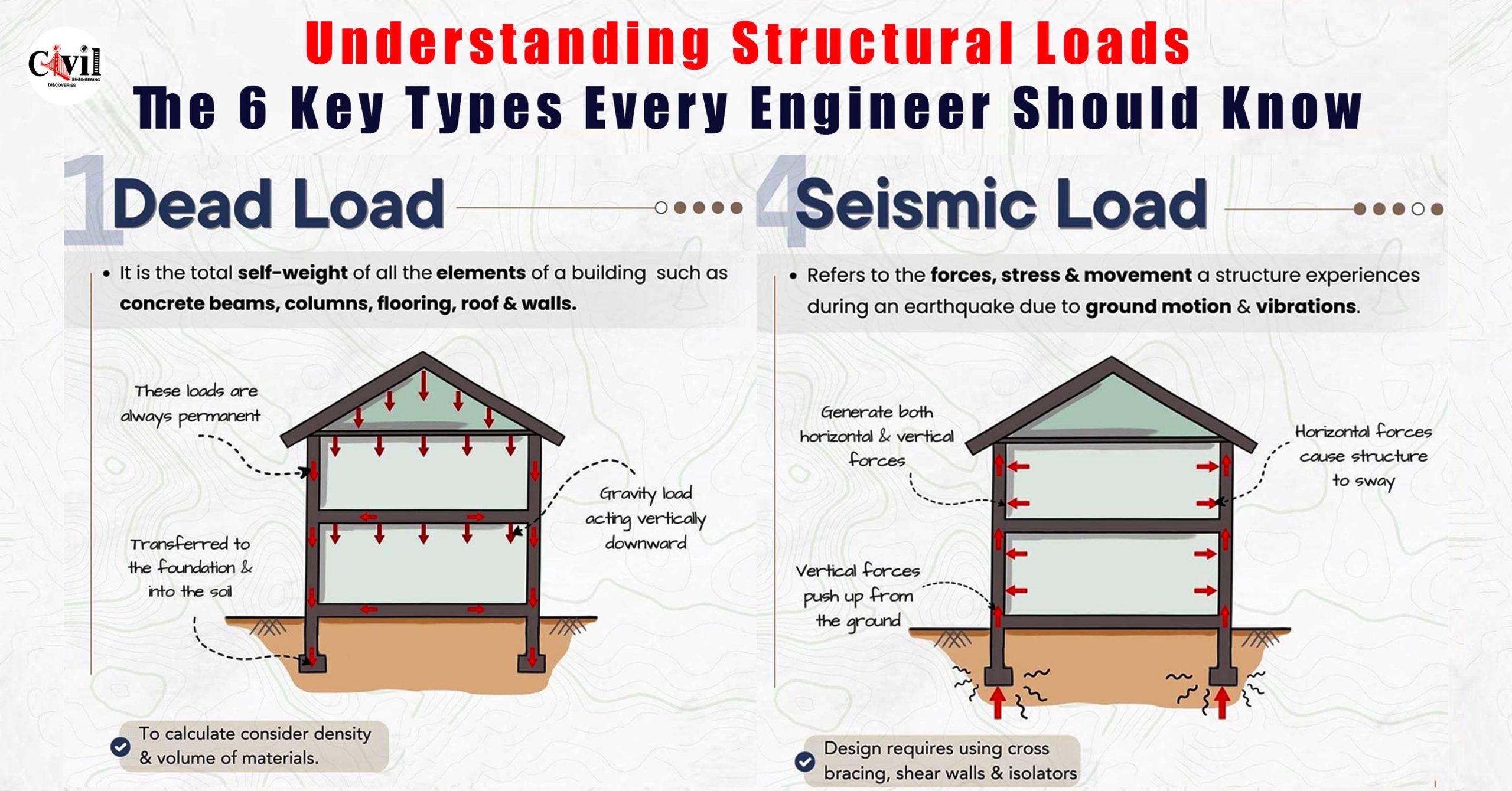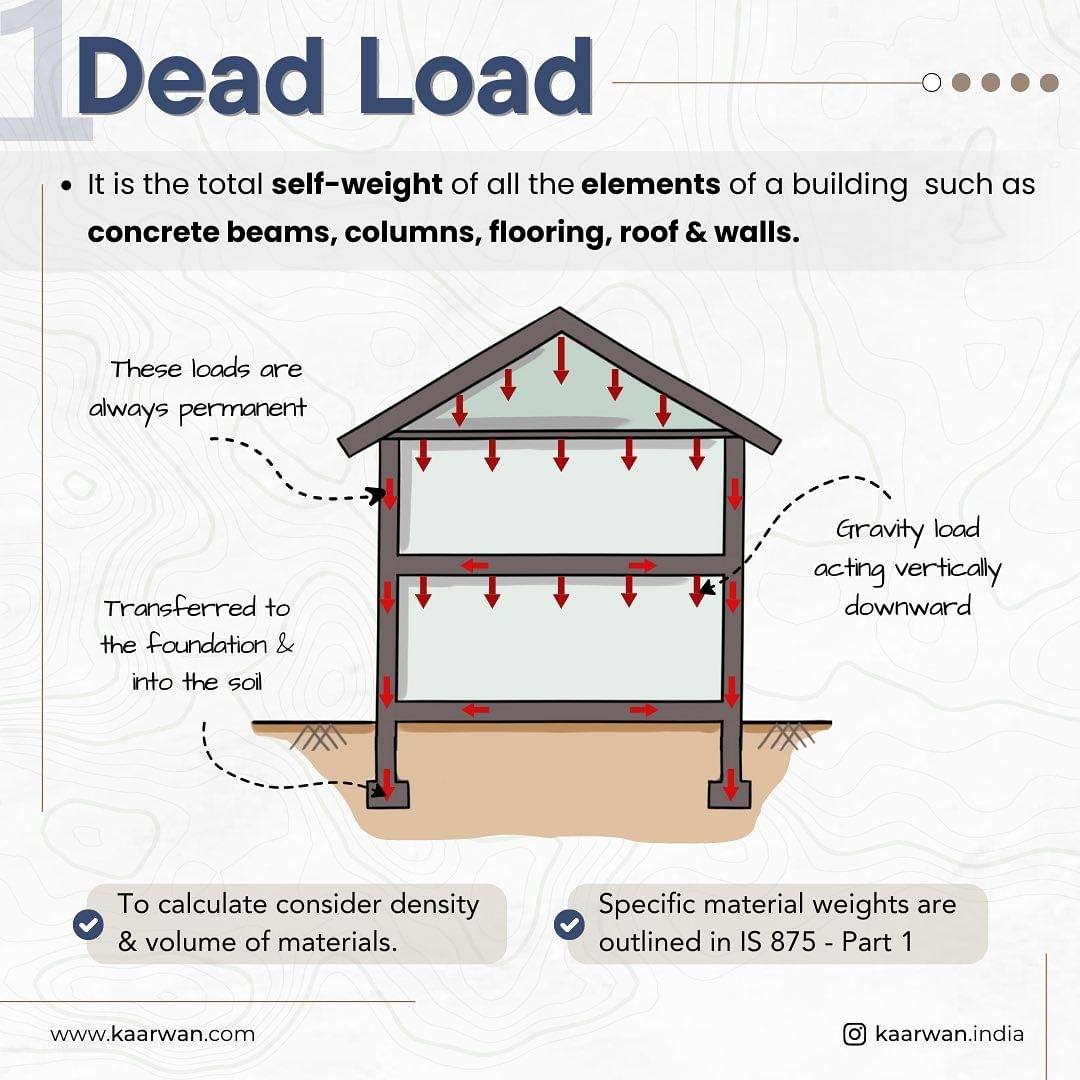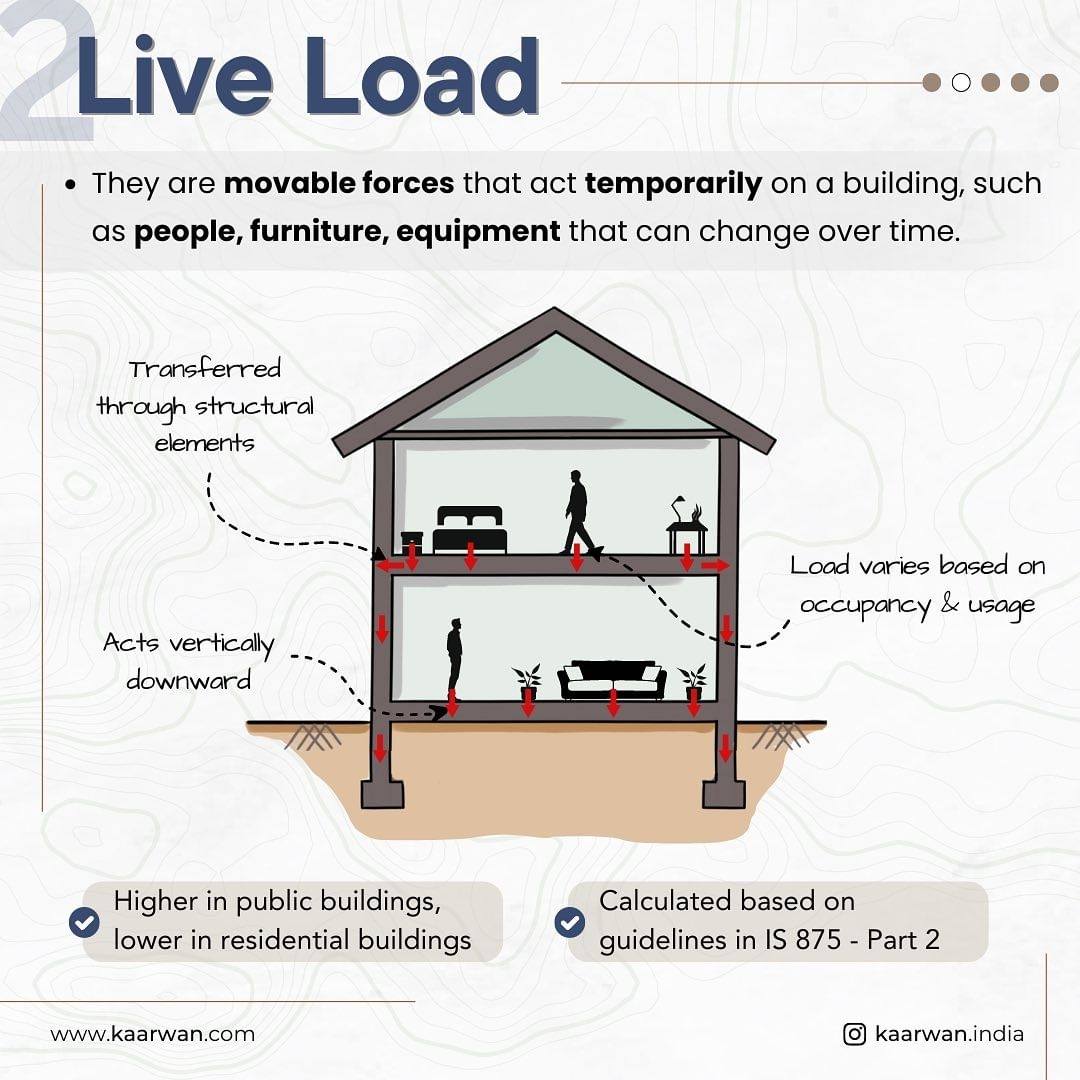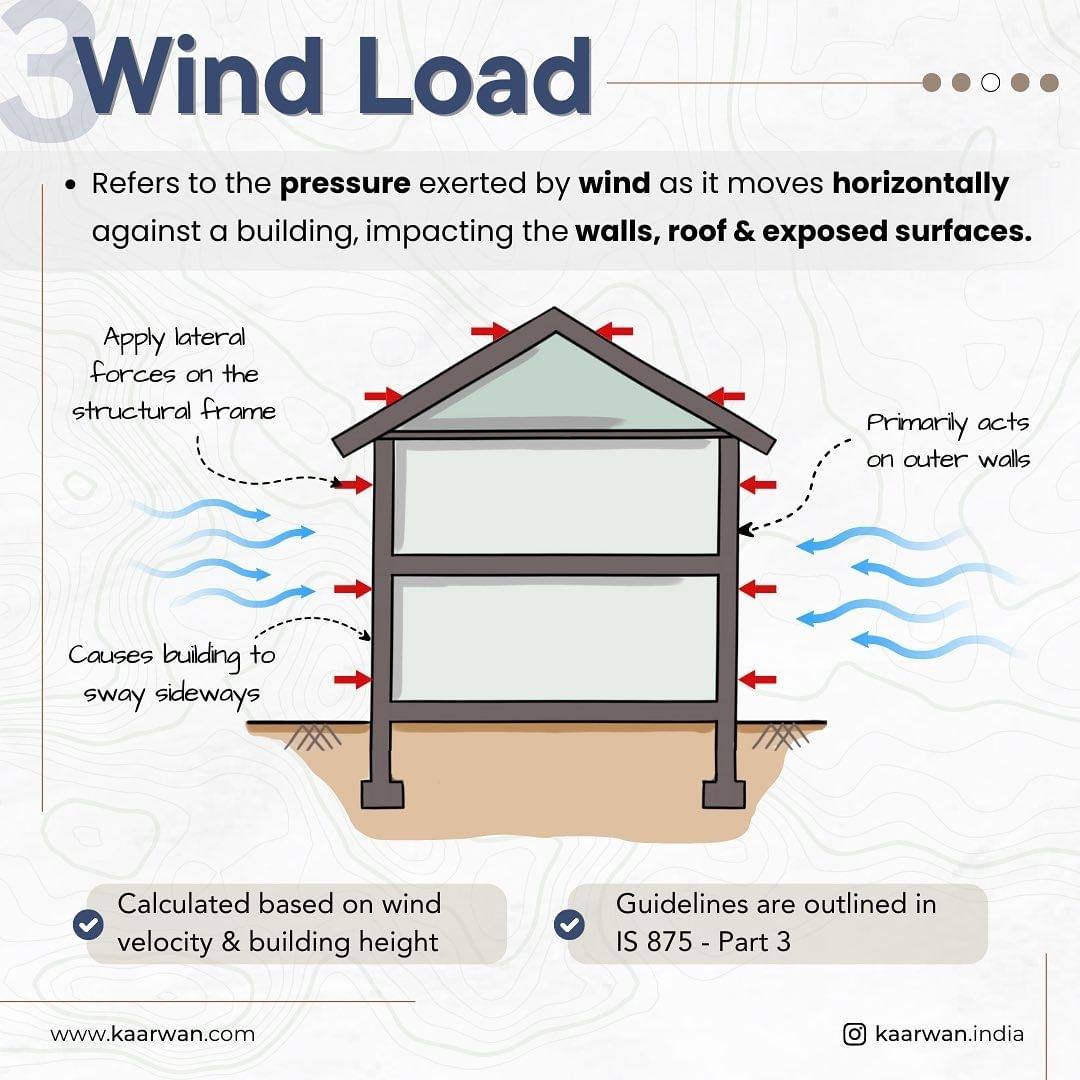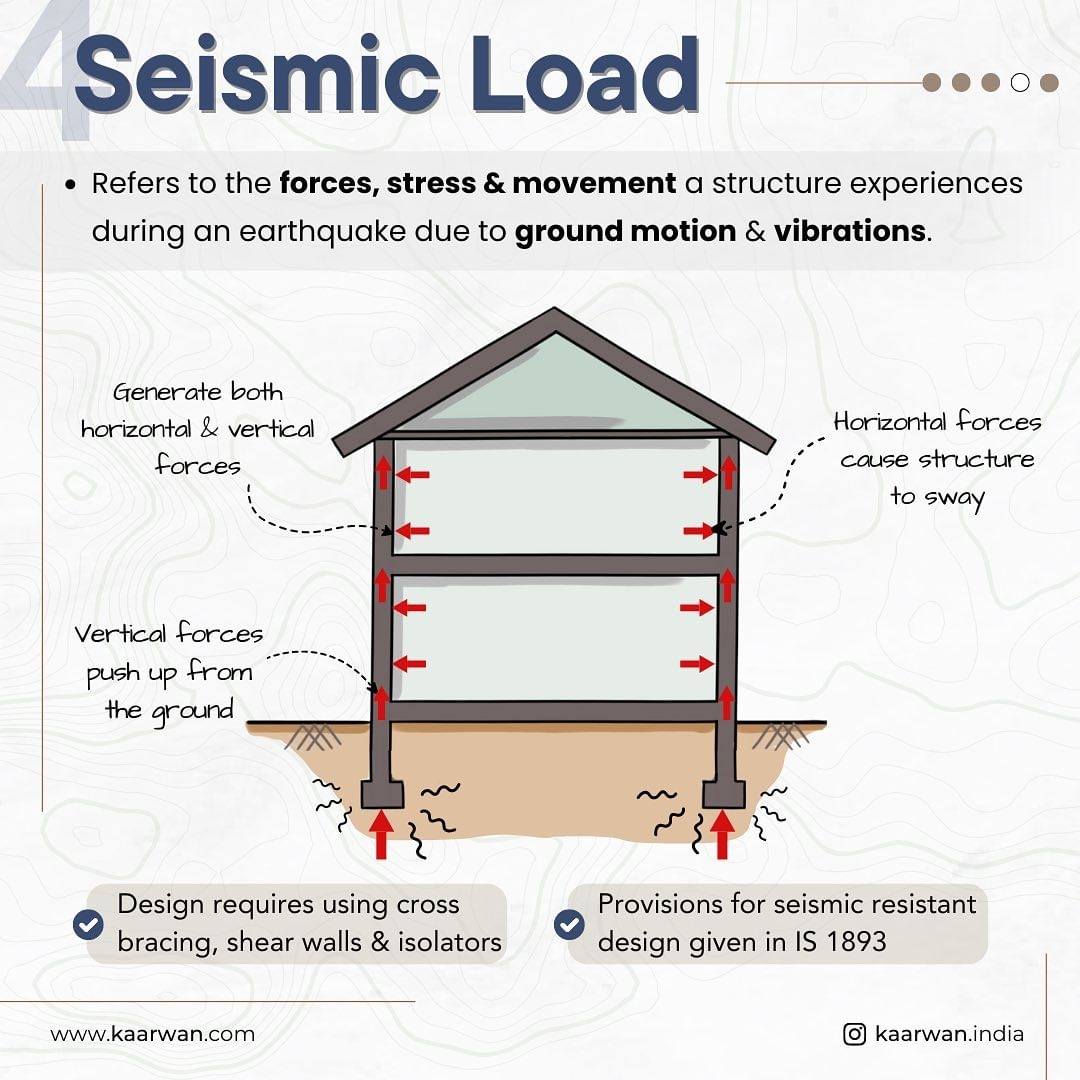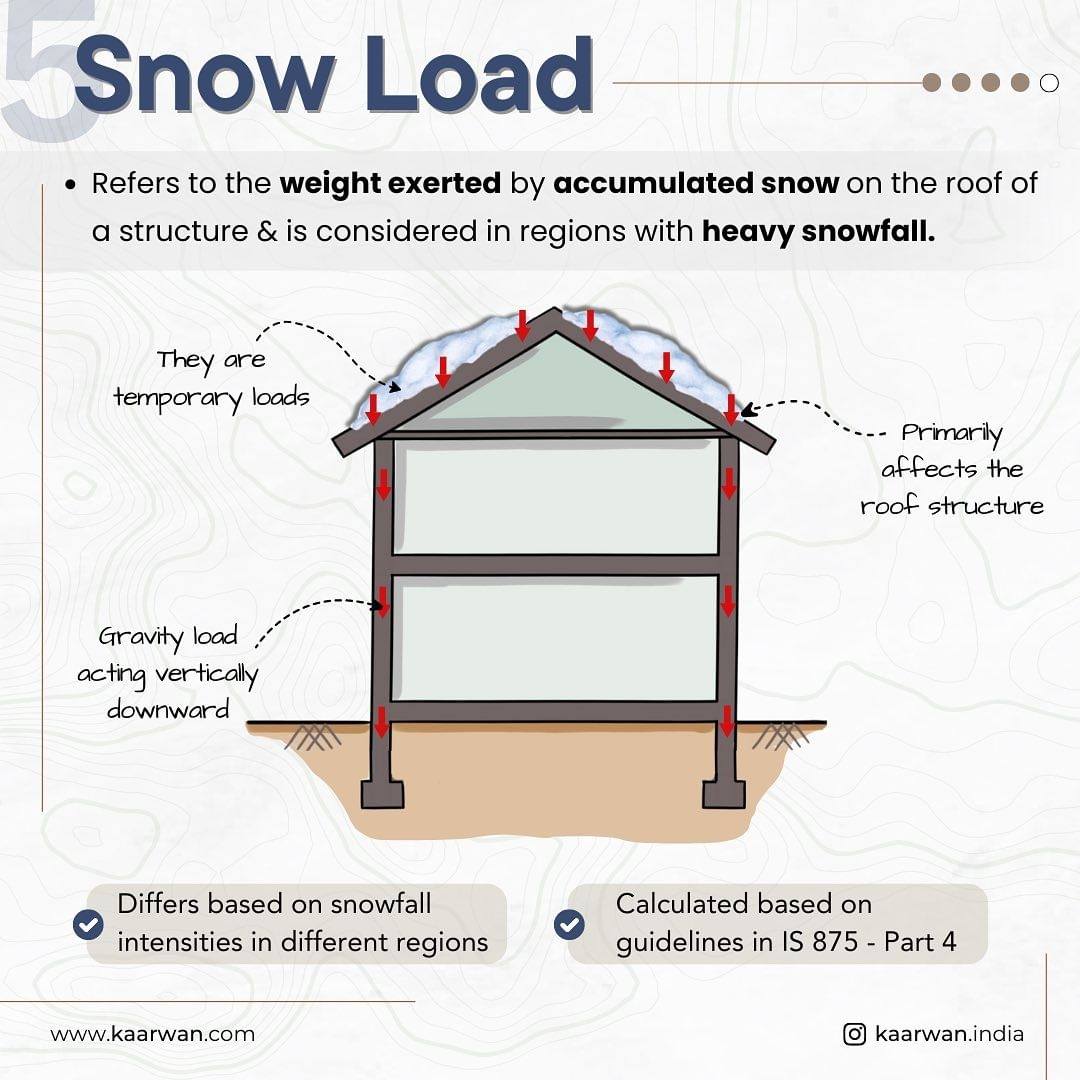In architectural and structural engineering, understanding the different types of loads that act on a building is essential for designing safe and efficient structures. Loads are the forces that buildings must support and withstand, and they vary based on environmental conditions, the building’s function, and materials. Below are six primary types of structural loads that influence architectural design:
1. Dead Load
- Definition: Dead load is the permanent, stationary weight of all fixed elements in a building, such as concrete beams, columns, flooring, roofing, and walls.
- Characteristics: These loads are constant and always present as they represent the self-weight of the building’s structural elements.
- Calculation: To determine dead load, architects and engineers consider the density and volume of materials used in construction.
- Direction: Dead loads act vertically downward and are transferred to the building’s foundation and into the ground.
2. Live Load
- Definition: Live load consists of temporary, movable forces acting on a building, such as people, furniture, and equipment that can change over time.
- Characteristics: Live loads vary based on the occupancy and use of spaces within the building. Public buildings generally experience higher live loads compared to residential structures.
- Direction: Similar to dead load, live load also acts vertically downward but changes over time depending on usage.
- Design Consideration: Architects must design structures to withstand fluctuating live loads, especially in buildings with variable occupancy, like theaters, malls, or offices.
3. Wind Load
- Definition: Wind load refers to the lateral pressure exerted by wind as it moves horizontally against a building. It affects the building’s walls, roof, and exposed surfaces.
- Characteristics: Wind load can cause a building to sway and is influenced by factors like wind velocity and building height.
- Direction: Wind loads act primarily on the building’s outer walls and can create both lateral and uplift forces.
- Calculation: Architects determine wind loads based on regional wind speeds and building dimensions, ensuring structures are designed to handle potential sway and pressure.
4. Seismic Load
- Definition: Seismic load refers to the forces, stress, and movement a structure experiences during an earthquake due to ground motion and vibrations.
- Characteristics: Earthquakes generate both horizontal and vertical forces that can cause buildings to sway or shake, requiring special structural design considerations.
- Direction: Seismic loads create horizontal forces that cause lateral movement and vertical forces that push up from the ground.
- Design Requirements: Buildings in earthquake-prone regions need additional reinforcement, such as cross-bracing, shear walls, and isolators, to enhance stability and reduce seismic impact.
5. Snow Load
- Definition: Snow load is the weight exerted by accumulated snow on a structure’s roof, relevant in regions with heavy snowfall.
- Characteristics: Snow loads vary based on snowfall intensity and are temporary, as they depend on weather conditions.
- Direction: Snow load acts vertically downward due to gravity and primarily affects the roof structure.
- Design Consideration: Architects must account for snow load to prevent roof failure in snowy climates, using data on regional snowfall intensity to calculate the load.
6. Rain Load
- Definition: Rain load occurs when water accumulates on the building’s roof due to rainfall, rain loads are critical to consider in regions with frequent heavy rainfall.
- Characteristics: The load created by water pooling on flat or poorly drained roofs adds stress to the structure.
- Direction: Similar to snow load, rain load acts vertically downward.
- Design Requirements: Proper roof drainage systems, including gutters and slope adjustments, are necessary to manage rain loads effectively and avoid water buildup.
Click Here To See Load Distribution In Two-Way Slabs
Photo Credit: kaarwan
Subscribe
Login
0 Comments
Newest
